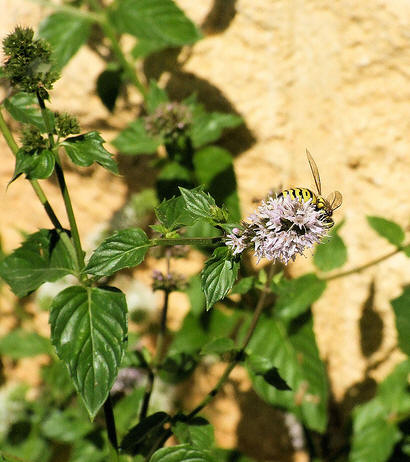Nutrition

The peppermint plant itself is a very hearty,
perennial herb. It can grow in most any soil-type, but
grows best in well-drained soil with a pH between 6.0-7.0.
It is important to have the soil moist, but overwatering or
improper drainage is an invitation for fungal growth or other
disease causing agents in the plant. It also grows best in
areas of partial shade to full sun. Due to the prolific
nature of M. piperita, this is basically all the plant
needs to grow. However, liquid fertilizers or adding
decomposing organic matter are never discouraged.
The peppermint plant, as well as almost all other green plants make their own food in a process known as photosynthesis. During photosynthesis, carbon dioxide and water combined with
energy from the sun to form glucose, a sugar that is used in plant metabolism, with oxygen being a byproduct of this procedure.
The water needed for this reaction to occur is brought up from the roots of the plant through a tissue called xylem. Water evaporating from stomata, located on the leaves, pulls water molecules behind it up as if connected by a string.
It is due to two properties of water, cohesion and adhesion, that this is possible.
It is common sense that the water is brought
up from the roots, but did you know that sugar is brought
down from the leaves? Tissues in the stem called phloem carry the glucose towards the roots utilizing osmotic pressure; where high concentrations of glucose try to move towards lower concentrations with an overall movement of glucose down the stem of the plant.
To learn more about how these processes and components help M. piperita to replicate itself, check out the reproduction page! Or, go back home.